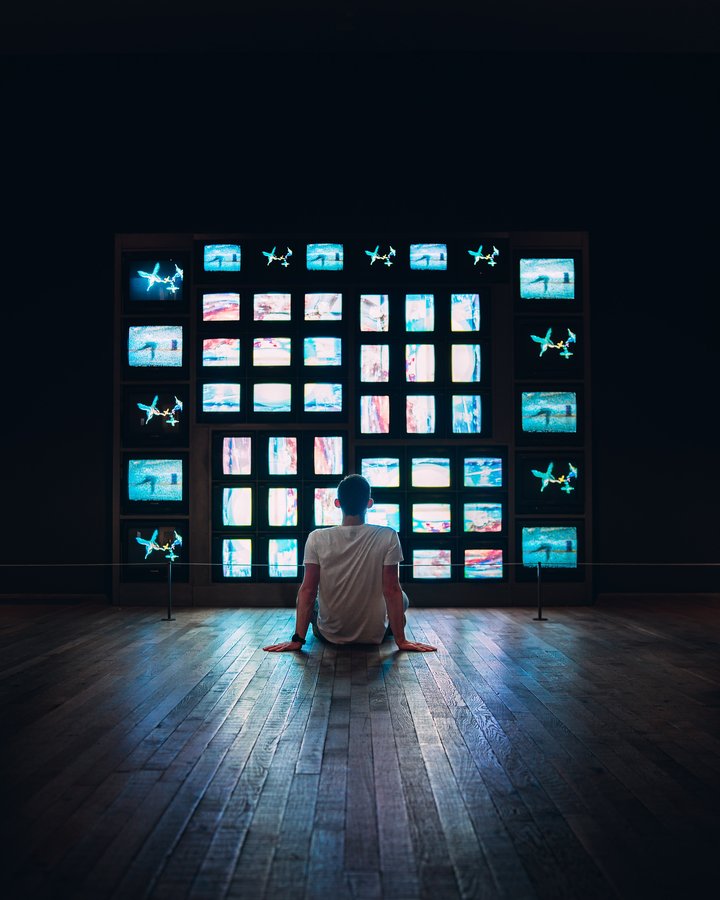TV series, a place of prospecting for new innovations

We always thought that watching TV shows was a delicious addictive pleasure, sometimes desocializing when the last episode keeps us awake until 4:30 in the morning. However, our greatest pleasure is when we interpret TV series to show that they are an inspiration for innovation. That’s why we offer an insight about the trends, future uses and technologies to be invented thanks to today’s TV series, during our CreativeTech’s tailor-made breakfasts. Whether the series Black mirror, Sense 8, Humans, Mr Robot, all of these series are case studies to understand the link between art and innovation. This dialogue between TV series and innovations is not new. Here the evidence, StarTrek has inspired some ingenious people who have marked their time. Get ready for a small journey into the world of TV shows.
Star Trek, from a trivial TV series to a muse
StarTrek is probably one of the first series that inspired the innovations of the 19th Century. Indeed, when Jim Goodnight, the founder and CEO of SAS, uses Amazon’s Alexa voice assistant to launch an analysis of his new search software, it’s a bit like Captain Kirk talking to his computers.
When Captain Kirk was already talking to his computers before Amazon’s Alexa has been invented ©YouTube Romulan64
Another example, still connected to Star Trek, is the invention of the mobile phone. When Martin Cooper, an engineer at Motorola recruited in the early 1970s, built a portable radio by trying to reproduce Captain Kirk’s Communicator, he invented the mobile phone (video from the 35th second).
The list goes on and on of other inventions imagined by the creators of Star Trek, which have inspired companies and are now an integral part of our daily lives. The “replicators” are today 3D printers, the “Universal translator” in charge of making humans and aliens from all galaxies communicate reveal to be nowadays automatic translation software, algorithms or AI; Lieutenant Uhura’s hands-free kit, the “tricorder”, which makes it possible to detect and scan illnesses, are present today in almost all IoTs and wearableTech, but also in giant screens, video calls, tablets and of course PCs. Although it is tempting today to discard quantum computers, the current inventions are inspired by the Warp Drive, Star Trek’s “faster-than-light” ship, aren’t they? Like Star Trek, nowadays, more contemporary series, keep being a source of inspiration.
Captain Kirk’s Communicator, inspiration for the invention of the cell phone? © YouTube CBS
Technology, a great source of emotions
Which contemporary series are the new sources of inspiration like Star Trek? The sources of inspiration for companies, based on the imaginary worlds of current series, are less about objects than about social relationships, in particular the emotional interactions between humans and machines, in both the private and corporate spheres.
Black Mirror, the British series created by The Guardian journalist Charlie Brooker, meticulously analyzes our social relationships and our reactions to technology in a mix of attraction and repulsion. The title of the series refers to the dark, black dimension of technology. Each episode, directed by a different filmmaker, questions how technology affects human nature. Episode 1 of season 3, “Nosedive”, takes us into a world where everyone gives a mark to the actions of their relationships, friends and colleagues. Episode 2 of season 4, “Arkangel”, directed by Jodie Foster, deals with the timeless question of how parents should take care of a child in an increasingly high-tech world. Mr. Robot, an American series created by Sam Esmail, puts under tension our relationship with big business by staging a depressive and paranoid computer scientist, “recruited” by a mysterious anarchist, Mr Robot of the Fsociety, a group of hackers whose objective is to destroy the infrastructures of big banks and companies in order to restore the balance of society.
The “Nosedive” episode seen by the team © YouTube Netflix
The Swedish series Real Humans, created by Lars Lundström, tests our ability to deal with robots, especially robots with feelings and consciousness. Hubots (Human-robots) have invaded homes and businesses to help humans with household and industrial tasks. A program allows them to have thoughts and feelings. One of the protagonists thinks that it is possible to transfer “human consciousness” into a hubot . . . . The American-British series Humans, inspired by the Swedish series, highlights the notion of machine consciousness, brought to light by AI researchers such as Laurence Devillers or Jean-Gabriel Ganascia.
The way we entertain ourselves is also explored with the American series Westworld, created by Jonathan Nolan and Lisa Joy in 2016, an adaptation of the 1973 film Mondwest. Some “hosts”, androids reinitialized at the end of each narrative loop, populate a futuristic amusement park, recreating the Wild West of the 19th century, Westworld. Visitors (newcomers) can do what they want in the park, without any consequences but following the update of the “hosts” program, several bugs in the behavior of the androids are observed . . . .
Lastly, Sense 8 features 8 characters, strangers to each other, connected by telepathy and capable of feeling the emotions of the other 7. A sensational dive, in the first meaning of the word . . . .
These sources of inspiration can today be implemented in companies through a new approach, the CreativeTech-ers approach, which combines artistic creation, science, and engineering, philosophy and business model. The next step after open-innovation will be open-creativity. For the best and . . . the best.
